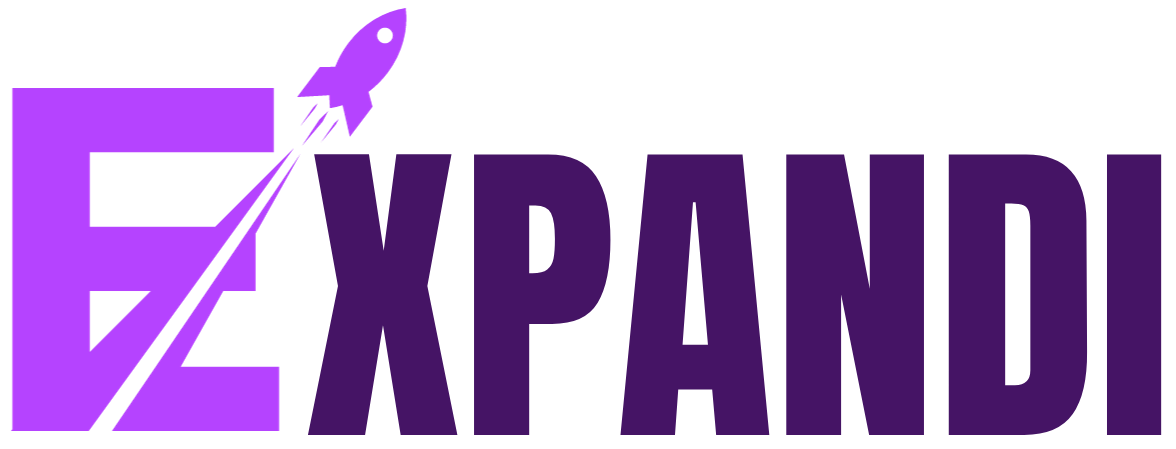When it comes to outreach, it’s not about quantity but quality that truly matters. While some may emphasize the number of leads, our focus lies elsewhere: identifying the right-fit leads ready to purchase.
With limited resources, it’s essential to prioritize individuals and companies with higher chances of success and closing the sale. Not only should they align with your ideal customer profile, but they should also be in the appropriate stage of their customer journey.
This article will comprehensively understand lead qualification tailored to inbound sales. So, let’s explore everything you need to know!
What are sales-qualified leads?
A sales-qualified lead refers to one that meets your Ideal Customer Profile (ICP) criteria and shows a high likelihood of making a purchase. When a lead fulfills these requirements, they are considered qualified and designated as sales-qualified leads or prospects.
At this stage, they are progressed to the next phase of the sales cycle, indicating that they are ready for more targeted sales efforts and closer engagement with your sales team.
What is the Outbound funnel?
The outbound funnel differs from a traditional sales funnel in that it requires guiding potential clients by asking the right questions at the right time to determine their qualifications. While the ultimate goal of lead qualification remains identifying promising prospects, there are notable distinctions between qualifying inbound and outbound leads.
In the case of inbound leads, they have already shown interest and initiated contact, indicating some level of pre-qualification. The focus lies in understanding their needs, assessing their fit, and nurturing them toward conversion.
On the other hand, outbound leads offer the business more control over who they reach out to. Outbound lead qualification involves defining specific criteria and actively identifying potential leads who meet those criteria.
What are the Criteria for Qualifying Leads?
When qualifying leads, it is essential to assess whether they meet the following criteria:
- Interest: Determine the level of interest the leads have in your product or service. Look for those who are genuinely interested and ready to engage further.
- Need: Identify leads who have a genuine need for your offering. Focus on individuals and companies for whom your product can provide a solution to specific problems or help them achieve their goals.
- Budget: Ensure that potential customers have the financial capacity to afford your product. Ask relevant questions to understand their current expenditure on similar solutions or their expectations regarding pricing.
- Time: Determine if the leads are prepared to purchase in the immediate future. Assess their position in the sales funnel and inquire about any potential barriers or concerns that may hinder their decision-making process.
- Authority: Ascertain whether the person you are communicating with possesses the authority to make purchasing decisions. In cases where there are multiple decision-makers, request assistance in connecting with the relevant individuals within their organization.
By evaluating leads against these criteria, you can effectively identify and prioritize prospects who are more likely to convert into valuable customers.
Steps to Lead Qualification
The lead qualification process involves three main steps: research, outreach, and qualification. While these steps may seem straightforward, there is more to each phase than meets the eye.
Let’s explore each step in detail:
Read More: Sales Forecasting Methods: Predicting Sales For Sustainable Growth
- Research
It’s crucial to conduct thorough research to gather relevant information about the company or organization you are targeting. This information goes beyond individual lead details and focuses on organization-level insights.
Some key areas to focus on during your research include:
- Company Funding Information: Understanding a company’s funding status helps assess its potential as a prospect. Recent funding rounds or significant investments indicate a higher likelihood of purchasing, allowing you to prioritize leads accordingly.
- General Company Information: Gather details such as the company’s employee count, locations or headquarters, mission statement, and the specific problem they aim to solve. This information provides insights into their goals and how your product or service can meet their needs.
- Positive and Negative Growth Signals: Look for positive growth indicators, including new leadership hires, product launches, or active hiring. These suggest a company’s expansion potential and willingness to invest. Conversely, negative growth signals like layoffs or lack of funding may indicate challenges or decreased readiness for a purchase.
- Outreach
In the outreach phase of the lead qualification process, the objective is to gather specific information about the lead’s current situation, needs, and plans. It involves direct communication with the lead to obtain valuable insights that may not be available through research alone. While the list of qualifying questions is incomplete, a quick search can provide a wealth of additional questions tailored to your industry and target audience.
These questions typically revolve around important themes such as budget, timeline, and decision-making authority. Sales professionals have developed frameworks over the years to understand better which leads are worth qualifying and are likely to provide the highest return on investment.
- Qualification
During the qualification stage, armed with lead qualification frameworks, lead scoring techniques, and relevant qualifying questions, you have the necessary tools to determine which leads are worth considering as prospects and progressing through the sales cycle. However, it’s important not to discount leads that may not be immediately ready for qualification.
Circumstances, priorities, and timelines can change over time. Instead of completely dismissing unqualified leads, keeping track of any changes in their circumstances that could indicate a newfound ability to make a purchase, such as funding rounds or acquisitions is advisable. By staying aware of potential shifts, you can reassess and re-qualify leads that might have become more suitable for your offerings.
Most effective lead qualification frameworks
BANT
BANT, an effective lead qualification framework, focuses on Budget, Authority, Needs, and Timeline. Assessing these factors helps determine the qualification of a lead:
- Budget: Evaluate if the prospect has the financial resources to purchase your product or service. Monitor indicators like hiring activity and funding status using tools such as Crunchbase Pro.
- Authority: Identify the decision-making authority within the organization and stay updated on any changes in leadership or management.
- Needs: Determine the prospect’s specific needs and whether your offering can address them effectively. Leverage insights from G2 Stack to understand their current tech stack and identify opportunities.
- Timeline: Consider the prospect’s readiness to purchase by aligning their timeline with your typical sales cycle. Utilize real-time alerts and advanced search filters from Crunchbase Pro to gather relevant information.
By applying the BANT framework and utilizing appropriate tools, you can enhance lead qualification and focus on prospects with a higher likelihood of conversion.
ANNUM
ANNUM is a lead qualification framework that identifies decision-making authority as the primary factor. It stands for Authority, Need, Urgency, and Money. Here’s an overview of each component:
- Authority: Determine if the person you are speaking to has the authority to make purchasing decisions.
- Need: Assess whether the company truly needs your product or service.
- Urgency: Evaluate the level of urgency in finding a solution. Greater pain points often indicate a higher urgency to address the problem.
- Money: Determine if the lead has the budget required to make a purchase.
Each lead qualification framework, including ANNUM, aims to assess whether a lead qualifies as a sales-qualified lead. By filling up relevant information in your CRM, such as job titles, budget availability, specific needs and pain points, and urgency, you can assess each Marketing Qualified Lead (MQL) and determine the appropriate next steps for engagement.
CHAMP
The CHAMP framework emphasizes the goals and priorities of prospects, making it a more contemporary alternative to the BANT framework. It consists of the following components:
- Challenges: Focuses on understanding the specific challenges the prospect is currently facing.
- Authority: Similar to BANT, it involves identifying the individuals within the company who have decision-making authority or are involved in the decision-making process.
- Money: Like BANT, it involves assessing whether the lead has the budget available for your product or solution.
- Prioritization: A key element in CHAMP, it evaluates the level of urgency or priority the lead assigns to solving the problem. Solutions that are considered essential rather than optional tend to have an accelerated timeline.
The CHAMP framework acknowledges the significance of the lead’s perspective and considers their challenges, decision-making authority, budget, and prioritization to identify qualified leads.
MEDDPICC
MEDDPICC is a comprehensive deal framework that helps salespeople qualify leads and assess the likelihood of closing a deal. Adapted from the MEDDIC framework, it provides a detailed approach to the sales process. Let’s explore each component of MEDDPICC:
- Metrics: Understanding the key metrics and quantifiable value your solution can bring to the company.
- Economic buyer: Identifying the person with the authority to spend money and create a budget, as they are the ultimate decision-maker.
- Decision criteria: Understanding the specific standards that need to be met to win the company’s business.
- Decision process: Clarifying how decisions are made within the organization helps predict when a deal will close.
- Paper process: Considering the involvement of legal teams in B2B/enterprise sales and understanding the legal process and timeline.
- Identify pain: Deeply understand the prospect’s pain points from multiple angles and recognize the consequences of not solving them.
- Champions: Building strong relationships with internal champions within the organization who can advocate for your solution.
- Competition: Identifying, understanding, and differentiating yourself from competitors, while maintaining unbiased honesty in discussions.
The MEDDPICC framework enables a holistic approach to deal qualification and provides valuable insights into the sales process, helping sales professionals assess the potential for successful deal closures.
Read More: The Power Of Personalization In Sales Development: How To Stand Out From The Crowd
What is the Outbound Sales Process?
The outbound sales process begins with reaching out to potential customers and presenting them with a solution for their perceived problem. Unlike inbound sales, which rely on attracting leads through content, outbound sales involve proactively initiating contact and delivering your message. While outbound sales are often associated with cold calls and pitching to strangers, it can be much more than that.
A well-planned outbound strategy includes multiple stages to build relationships with potential customers and nurture them before making a product pitch. This approach focuses on establishing rapport, providing value, and gradually moving prospects through the sales funnel to increase the likelihood of a successful outcome.
How to perform outbound lead generation?
Outbound lead generation encompasses various tools and strategies to reach potential leads. Here are some examples:
- LinkedIn: Utilizing LinkedIn’s filters and automation tools, B2B lead generation can be highly efficient and precise, making it an effective platform to connect with leads.
- Outbound emails: Many B2B companies initiate contact and introduce their products or services through email. Crafting an effective email sequence can be crucial for successful outreach.
- Cold calling: This approach is often used in conjunction with other lead generation methods or as a follow-up to establish direct communication with potential leads.
Effective Strategies for Generating Qualified Sales
In outbound sales, the key to success lies in effectively generating and qualifying leads. This requires a strategic approach that combines targeted outreach, personalized messaging, and the use of technology to streamline the process.
- Identifying your ideal customer profile:
Before qualifying leads, define your ideal customer profile (ICP) based on firmographic data such as company size, industry, location, funding, and revenue. This helps you target the right prospects and make informed decisions about which leads to pursue.
- Creating targeted and personalized messaging:
Craft messages that focus on the customer’s problems and demonstrate how your product or solution can help them achieve their desired outcomes. Research the company you’re contacting and show genuine interest. Avoid generic messages and instead personalize your communication.
- Leveraging multiple channels for outreach:
Choose the appropriate outreach channels based on your target audience. LinkedIn is an excellent platform for B2B sales, allowing you to filter prospects based on various criteria. Email is another effective channel; you can find prospect emails on LinkedIn profiles or company websites. Consider combining cold calling with LinkedIn messages for a more personalized approach.
- Using technology to streamline the process:
Automation tools can significantly streamline your B2B sales process and enable you to reach more qualified leads. Tools like Expandi can automate LinkedIn and email outreach, allowing you to connect with prospects at scale, schedule follow-up messages, and use smart sequences based on prospect behavior. Utilize technology to mimic natural conversations and enhance your efficiency.
By implementing these strategies, you can generate more qualified sales leads in your outbound sales efforts. Remember to focus on targeting the right prospects, personalizing your messages, leveraging multiple channels, and utilizing technology to optimize your process.
How to track outbound sales success?
Metrics to track outbound sales success vary based on the chosen outbound channel. Here are some key metrics to consider:
- Open rate: Measure the percentage of recipients who open your emails or LinkedIn messages. Experiment with catchy subject lines and personalized message previews to improve open rates.
- Response rate: Track the rate at which prospects respond to your outreach efforts. Experiment with customer-centric messaging, hyper-personalization, addressing pain points, strong calls-to-action (CTAs), and creating a sense of urgency to increase response rates. Measure both positive and negative responses.
- Click-through rate (CTR): Measure the percentage of recipients who click on links in your communications, whether PPC ads or message links. This metric indicates engagement and interest.
- Marketing-qualified lead (MQL) rate: Determine the percentage of prospects who meet your marketing-qualified lead criteria. If the rate is low, consider refining your target audience or reevaluating your buyer personas.
- MQL to sales-qualified lead (SQL) conversion rate: Track the percentage of MQLs that progress to become sales-qualified leads. If the rate is low, adjust your audience targeting or focus on leads further down the sales funnel. Consider providing additional training to your sales team.
- Conversion rate: Monitor the rate at which leads convert into paying customers. Analyze this metric to identify common traits among your best customers, enabling you to effectively target leads with similar characteristics.
By tracking these metrics, you can gain valuable insights into the effectiveness of your outbound sales efforts, identify areas for improvement, and make data-driven decisions to optimize your lead generation and conversion processes.
With the help of the Outreach tool expandi, you can find high-quality leads and execute inventive sequences, like sending friend/follow request messages, comments on prospects’ posts and messages.
Conclusion
Generating qualified sales leads in outbound sales requires a strategic approach focusing on targeting the right prospects, crafting personalized messaging, leveraging multiple outreach channels, and utilizing technology to streamline the process. You can engage potential customers more effectively by identifying your ideal customer profile and tailoring your messages to address their specific needs and challenges.
Tracking metrics such as open rates, response rates, and conversion rates provides valuable insights into the success of your outbound sales efforts and allows for continuous improvement. By consistently refining your strategies and optimizing your lead qualification process, you can increase your chances of converting leads into valuable customers.
So, embrace the thrill, seize the opportunity, and conquer the outbound sales realm!





